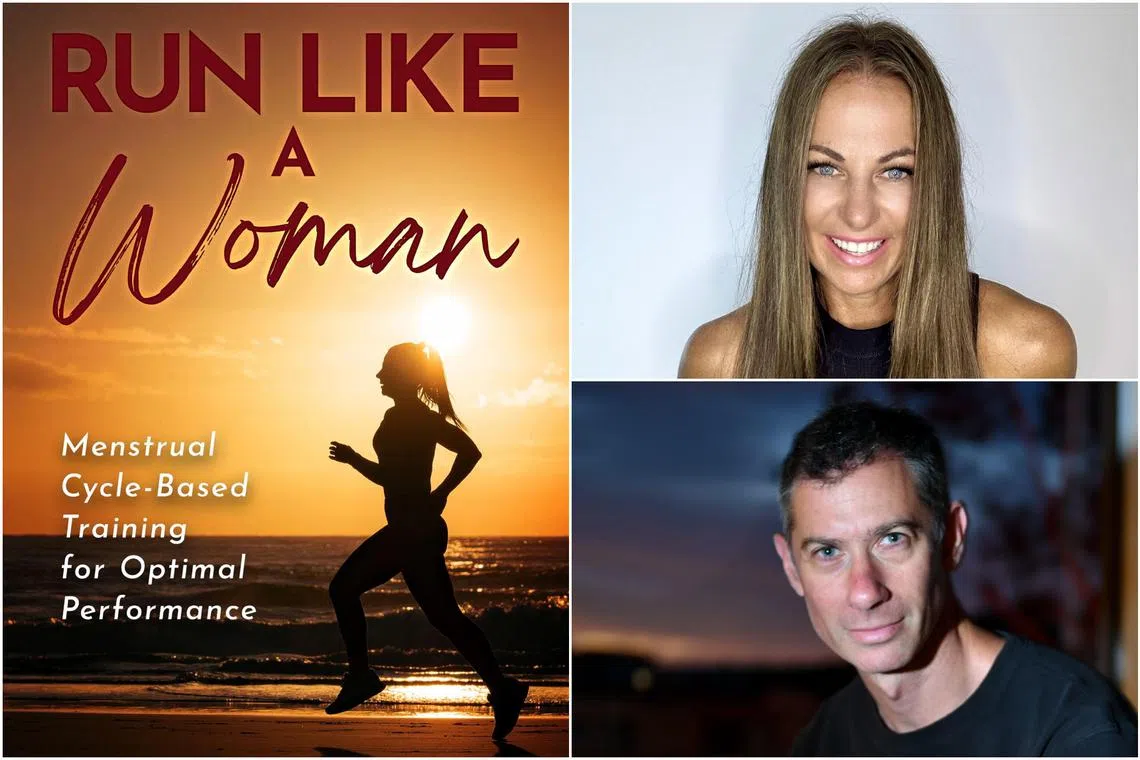Book review: Run Like A Woman addresses stigma of female athletes menstruating
Sign up now: Get ST's newsletters delivered to your inbox

Fitness influencer Natalie Dau (top right) and exercise physiologist Jason R. Karp break down the physical and hormonal differences women face as runners.
PHOTOS: COURTESY OF NATALIE DAU, COURTESY OF SCOTT SHEPHARD, COURTESY OF JASON R. KARP
Follow topic:
Run Like A Woman
By Dr Jason R. Karp and Natalie Dau amzn.to/3qjotGX
Non-fiction/Jason Karp and Natalie Dau/Paperback/154 pages/$28.37/Amazon SG (
3 stars
Over six chapters, Dr Jason R. Karp and Natalie Dau break down the physical and hormonal differences women face as runners, particularly due to the menstrual cycle.
Dau, a fitness influencer and Singapore permanent resident from Australia, writes: “We don’t need to hide it (menstruation) or be ashamed to talk about it with a coach, and if he (or she) dismisses it, it may be time to find a new coach who does take it seriously.”
The chapters are informative, if a bit dry and repetitive about the different phases of the menstrual cycle and what it means for energy levels.
The density of information is broken up by anecdotes – on Dau’s struggles with her menstrual cycle and her lifelong love of sport – that each chapter begins with.
A helpful pace breaker would have been to include more of her stories as a runner, particularly her transition from casual runner to ultramarathoner (runner of any distance greater than the marathon length of 42.195km).
Dr Karp, a running coach and exercise physiologist from Brooklyn, has experience coaching high school and college athletes in cross country and track and field in the United States.
As both authors are themselves runners, they have wisdom gleaned from grounded experience to share. Dr Karp’s background in exercise physiology comes through in explanations of how hormones affect the male and female bodies, and how varying hormonal levels during menstruation impact female athletes.
The book points out a pervasive stigma against talking about menstrual cycles, both in and out of athletic circles. It hit home for this reviewer, who took a semester-long “couch to 5K” running course in university and never heard a word about menstrual cycles affecting performance, despite half the class being female.
Where the book struggles is in its tendency to repeat information and pile examples together. If the structure were looser and more anecdotal, it would read less like a textbook and more like a helpful conversation with an understanding coach.
The book includes several examples of training programmes and nutritional guides to aid female runners. The suggestion may be confusing for beginners, but experienced athletes will have no problem understanding the charts.
As Dau and Dr Karp say: “Working on training means developing a system of training that is specific to female runners and their physiology. It means developing a system that works.”
If you like this, read: Good For A Girl by Lauren Fleshman (Penguin Press, 2023, $26.50, Amazon SG, go to amzn.to/3qt842D
This article contains affiliate links. If you buy through these links, we may earn a small commission.


